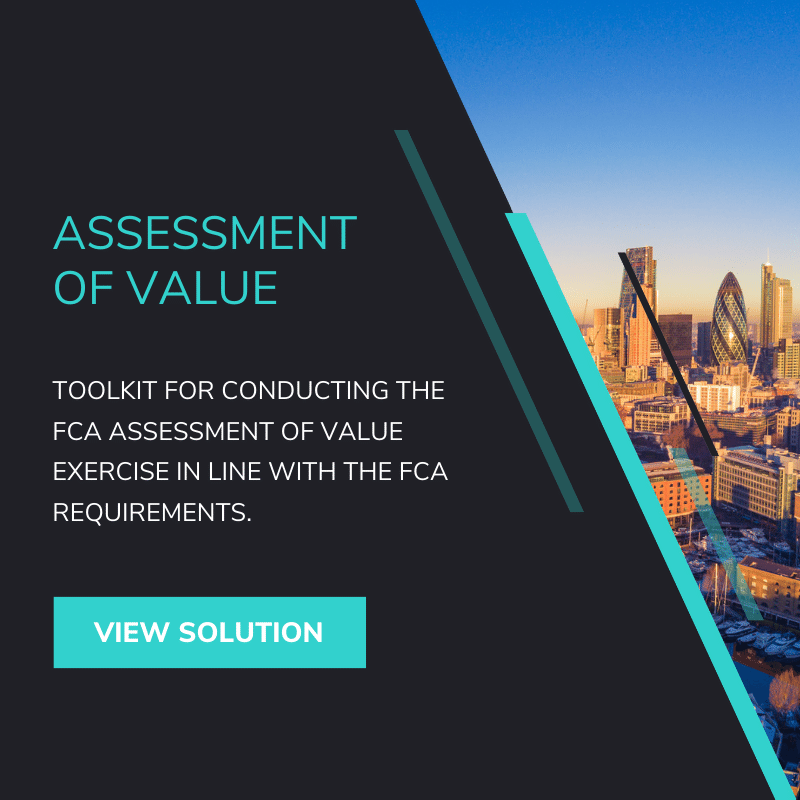CLOSET TRACKERS, ALSO KNOWN AS CLOSET INDEXING OR INDEX HUGGING, REFERS TO THE PRACTICE OF FUND MANAGERS CLAIMING TO MANAGE PORTFOLIOS ACTIVELY WHEN IN REALITY THE FUND STAYS CLOSE TO A BENCHMARK
IMPACT OF CLOSET TRACKERS
The issues around ‘closet trackers’ form part of a broader issue on the effectiveness of investor disclosure and the legitimate expectations of investors in respect of the service provided by some asset managers.
Closet trackers may result in:
- Investors making investment decisions based on an expectation that they will be provided with a more active fund management service than they receive in practice and, therefore, may be paying higher management fees than that usually envisaged for a passive/not significantly active management service;
- Investors being exposed to a different risk/return profile than they expect; and
Asset managers not providing clear descriptions of how funds are managed in key disclosure documents such as the fund’s Prospectus and Key - Investor Information Document (KIID).
The practice is now the focus of regulatory scrutiny and a clamp-down across Europe. ESMA is concerned the practice may harm investors as they are not receiving the service or risk/return profile they expect based on the fund’s disclosure documents, while potentially paying higher fees compared to those typically charged for passive management.
BACKGROUND
In 2016, ESMA conducted research on a sample of 2,600 funds for the period 2012-2014 to determine whether it could find any indication of closet indexing at an EU-wide level. Quantitative metrics, such as the percentage of a UCITS’ portfolio that does not coincide with the underlying equity benchmark, indicated between 5 and 15% of UCITS equity funds could potentially be closet indexers.
ESMA then reviewed the investor disclosure documents of the funds concerned, to see how they described their management strategy, and found they tended to confirm the quantitative analysis results.
Following ESMA’s analysis resulting in a statement on “supervisory work on potential closet index tracking”, a number of European regulators have investigated the “closet tracker” issue with varying results and subsequent measures taken.
Finanstilsynet, the Norwegian regulator, found that DNB Asset Management Fund had performed very closely to its benchmark, however, marketed and priced itself as an actively managed fund. In 2019, on appeal DNB Asset management was ordered to pay compensation of €35 million.
The United Kingdom conducted an initial analysis and found that 5 of 23 investment funds presented as active funds displayed profiles of closet trackers. More recently, in March 2018, following the FCA’s investigation into closet trackers, it announced that £34 million in compensation payments was to be made to investors. Furthermore, the FCA new assessment of value rules require managers to assess whether value of money has been provided to fund investors (New COLL 6.6.20).
Conversely, some regulators following ESMA’s research and using additional measures (outlined further in Country Methodologies and Results section), did not identify the same issues in their markets, such as the AMF in France or the CSSF in Luxembourg. Albeit, they did acknowledge
improvements were required in investor disclosures. Although BaFin did identify some funds which closely tracked an index, it did not identify any cases in which a fund was purportedly active, had corresponding fees and nonetheless solely tracked an index. Furthermore, BaFin stated that they are unpersuaded that it was its job as regulator to influence the level of fees charged by German funds or intervene in the economic decisions of the regulated funds.
MEASURES OF “CLOSET TRACKING”
There are a number of metrics used in the methodology to identify potential closet trackers. The most frequently referenced include:
- Active Share;
- Tracking Error Volatility;
- R2 (r-squared) and
- Style Shifting Activity (SSA).
While the Active Share shows the percentage of the portfolio that does not coincide with the underlying equity benchmark, the Tracking Error Volatility shows the volatility of the difference between the return of the portfolio and the return of its benchmark. Seen in conjunction, and in relation to a given equity index, low active share and low tracking error indicate that the portfolio of a fund is close to that of the respective index, which could be a sign for passive fund management.
The R2 ratio represents the percentage of a fund performance that can be explained by a change of performance in a benchmark index. The higher the R2, the closer the performance of the fund is correlated to that of the benchmark.
The style-shifting activity (SSA) developed by Herrmann, Rohleder, and Scholz (2016) seeks to capture shifts in management styles by measuring changes in fund exposures to various market factors between two quarters.
Following ESMA’s quantitative study, many European regulators have investigated closet tracking with varying results – see country specific methodologies and results section for more detail.
KEY DEVELOPMENTS
The following are summaries of key developments across a number of jurisdictions, including examples of inadequate investor disclosures, weak controls by management company boards and examples of overcharging and compensation:
DENMARK
2016 – Active/passive management in Danish UCITS
The Danish FSA published an analysis of the management of equity sub-funds in Danish UCITS. The analysis was based on reports of the financial measures, active share and tracking error, at the end of 2013, and it included 188 equity sub-funds.
The initial analysis showed that 56 of the 188 sub-funds had an active share of less than 60% combined with a tracking error of less than 4%. Following further investigation and changes in the methodology this was reduced from 56 to 22.
EUROPE
2016 – ESMA Updates on Supervisory Work on Closet Index Tracking
On 2nd February 2016, European Securities and Markets Authority (ESMA) published a Statement providing details of its work on closet index tracking funds.
ESMA conducted research on a sample of 2,600 funds for the period 2012-2014 to determine whether it could find any indication of closet indexing at an EU-wide level. Quantitative metrics, such as the percentage of a UCITS’ portfolio that does not coincide with the underlying equity benchmark, indicated between 5 and 15% of UCITS equity funds could potentially be closet indexers.
2017 – Better Finance Replicates ESMA Study on Closet Indexing
Better Finance replicates the ESMA study on closet indexing and identified up to 165 equity “UCITS” funds that could potentially be closet indexers.
In their press release they stated that ESMA would not disclose the names of the funds it identified as “potential equity closet indexing funds” in its investigation results. Due to this, Better Finance decided to replicate the ESMA study as closely as possible and – using the same quantitative analysis performed by ESMA – to disclose the list of the sampled funds, including those that are potentially “closet indexers”.
2017 – ESMA Includes Closet Indexing in Priorities for 2018
ESMA included closet indexing as a priority for 2018. Included in ESMA’s objectives is to ensure that NCAs are taking convergent approaches to situations where deficiencies are identified. In a single market where cross-border distribution of funds is widespread, ESMA believe it is a key part of ESMA’s role to try to ensure that investors are treated fairly across all Member States.
2018 – ESMA Hosts Workshop for National Supervisors on Closet Indexing
ESMA holds supervisors’ workshop for National Competent Authorities (NCAs) to promote supervisory convergence in NCAs’ supervision of closet indexing.
2019 – ESMA Issues Statement on Supervisory Work on Potential Closet Index Tracking
ESMA issues statement on supervisory work on potential closet index tracking. In the statement, ESMA informs stakeholders and especially investors about the potential for some European collective investment funds to be ‘closet index trackers’, and to give details on the work that ESMA has been doing in this context.
2019 – ESMA Clarify Benchmark Disclosure Obligations for UCITS
ESMA updates Q&A to clarify the UCITS KIID benchmark and past performance obligations. UCITS should clearly indicate, in the KIID, whether their strategy is ‘active’ (or ‘actively managed’) or ‘passive’ (or ‘passively managed’).
Additionally, investors should be provided with an indication of how actively managed the UCITS is, compared to its reference benchmark index.
FRANCE
2017 – AMF Integrates New Best Practices into its Policy
The Autorité des marchés financiers issues reminder to asset management companies of how important it is to draft the management objective clearly, especially when a fund refers to a benchmark index. The AMF is updating its policy to integrate best practices in this matter.
2018 – AMF Proposes Alternative Approach to Those Currently Used in Europe
AMF test alternative method for accessing closet index funds. The method proposed by the AMF adopts a return-based approach. By using market data solely, this method can be applied to a broader sample and aims to measure the degree of relative activity within a given fund population and its persistence over time. The method is applied to test a sample from between 2006 and 2016 of nearly 800 French funds invested in European equities.
GERMANY
2016 – BaFin Completes Closet Indexing Investigation
BaFin completes investigation into closet indexing having identified deficiencies in transparency. As a result of its investigation BaFin plans to increase transparency obligations for the investment fund industry and has also published a consultation on the matter.
BaFin plans to issue an announcement in order to increase transparency obligations for the investment fund industry. From mid-2017 at the latest, asset management companies will, in cases where equity holdings comprise 51% or more of the funds, have to state in their prospectuses whether retail funds are actively managed or merely track an index. If companies use a benchmark, then they will have to name it and also specify whether and by how much they intend for it to be exceeded or fallen below.
IRELAND
2019 – Central Bank Publishes Thematic Review of Closet Indexing
Central Bank of Ireland publishes outcome of a review of UCITS funds on the subject of closet indexing. Detailed analysis was carried out on all of the 2,550 Irish authorised UCITS funds classified as actively managed as at March 2018.
Key findings from the Review include:
- Investors were not always given sufficient or accurate information about the UCITS’s investment strategy in the Prospectus and KIID, to enable informed decision making on whether to invest in the UCITS.
- The Central Bank also found cases of poor governance and controls by Boards of UCITS Fund Management Companies.
- The Central Bank found cases where multi-manager UCITS consistently delivered a performance similar to an index.
- Cases were identified where the UCITS have a target outperformance against a benchmark that is less than the fee changed to certain share classes in the UCITS.
- Finally, the Central Bank found cases where the past performance section of the KIID did not include relevant benchmark disclosure.
LUXEMBOURG
2017 – CSSF Conclusions on Closet Index Tracking Work
Following ESMA’s review, the CSSF carried out its own investigations by considering, in addition to the quantitative measures used by ESMA such as Active Share, Tracking Error and R2, qualitative criteria including the actual management style and the disclosure to investors.
The CSSF could not identify any UCITS qualifying as closet index tracker. It could however be observed that investor disclosure in relation to the use of a benchmark can be improved for some of the funds under review. As a result, the CSSF asked the concerned management companies to increase the level of information disclosed in the key investor information document (KIID) and the sales prospectus.
MALTA
2018 – MFSA Circular on Self-Assessment in Relation to the Evaluation of Potential Closet Indexing Practices Adopted by UCITS and Retail AIFs
MFSA publishes self-assessment in relation to the evaluation of potential closet indexing practices adopted by UCITS and Retail AIFs. ManCos should determine whether a Fund falls under the below criteria classifying it as a potential closet indexer by considering: (a) “active share”, (b) “tracking error” and (c) “R2” (r-squared) as all-inclusive metrics, as a minimum.
NETHERLANDS
2016 – AFM Report on Index Hugging
The Autoriteit Financiële Markten (AFM) publishes report on index hugging, alternatively know as closet trackers. The report identified that 7 out of the 85 funds investigated by the AFM are closet trackers. In 2014, these 7 index huggers together managed nearly half a billion euros worth of assets.
The Report contains a number of recommendations aimed at preventing index hugging.
NORWAY
2015 – Finanstilsynet Investigates Closet Tracking
Finanstilsynet announces as part of its supervision of management companies, it is investigating whether Norwegian equity funds that are marketed and priced as actively managed funds are in fact managed as such.
Finanstilsynet decided to impose a corrective order on DNB Asset Management AS. The order broadly required the company to either bring the management of the fund into line with the characteristics of active management, as reflected in the fund’s prospectus and the management fee, or to adjust the pricing of the fund to the management strategy that has in point of fact been applied.
SWEDEN
2015 – Finansinspektionen Closet Index Funds Investigation
Finansinspektionen (FI) publishes report on consumer protection on the financial market. In the report FI discuss the tightening of rules and measures against closet index funds.
UNITED KINGDOM
2017 – FCA Publishes its Final Report on Asset Management Market
FCA publish final report on the Asset Management Market study. The FCA looked at fund performance, and the relationship between price and performance. In its additional analysis, FCA found substantial variation in performance, both across asset classes and within them.
FCA evidence suggests that, on average, both actively managed and passively managed funds did not outperform their own benchmarks after fees. This finding applies for both retail and institutional investors.
2018 – FCA Findings Through Quantitative and Qualitative Analysis on Closet Tracker Funds and Closet Constrained Funds
FCA publishes report reviewing potential closet tracker funds and closet constrained funds. In summary, 25 of these funds were adequately describing how investors’ money was being managed. Of the remaining 71 funds, FCA are working together with firms on 39 of them. Many of these funds are likely to update their disclosures to investors in 2019 following the release of Policy Statement 19/4 and 32 funds have already made improvements.
2019 – FCA Feedback to CP18/9 and Final Rules and Guidance
FCA published a Policy Statement 18/9 that sets out the final rules and guidance to address some of the findings of the asset management market study, focused on fund objectives and the presentation of benchmarks.
The new rules and guidance:
- set out how fund managers should describe fund objectives and investment policies to make them more useful to investors
- require fund managers to explain why or how their funds use particular benchmarks or, if they do not use a benchmark, how investors should assess the performance of a fund
- require fund managers who use benchmarks to reference them consistently across the fund’s documents
- require fund managers who present a fund’s past performance to do so against each benchmark used as a constraint on portfolio construction or as a performance target, and
- clarify that where a performance fee is specified in the prospectus, it must be calculated based on the scheme’s performance after the deduction of all other fees.
UNITED STATES
2018 – State of New York Mutual Fund Fees and Active Share Report
Investor Protection Bureau publish “Mutual Fund Fees and Active Share,” detailing the findings of an investigation into fees charged by actively managed mutual funds, their disclosures to investors, and their portfolio composition relative to their fees.
Attorney General Eric T. Schneiderman announced that after an industry-wide investigation into mutual fund disclosures and fees, 13 major mutual fund firms—including those run by some of the largest players in the mutual fund industry—have agreed to voluntarily publish important information about their mutual funds to all retail investors. Under the agreements, the firms will disclose new information that can help retail investors determine whether a higher-cost, actively managed mutual fund fits their investment goals better than another, lower-cost alternative.
COUNTRY METHODOLOGIES AND RESULTS
ESMA conducted a quantitative study to identify potentially closet index funds among European equity funds using the Cremers and Petajisto method
Following ESMA’s quantitative study, many European regulators have investigated closet tracking with varying results outlined below.
ESMA
ESMA created a sample of funds, focusing on UCITS equity funds, domiciled in EU Member States, that were not categorised as index-tracking UCITS and that had:
- assets under management of more than € 50mn;
- an inception date before 1 January 2005; and
- management fees of more than 0.65% of the net asset value (NAV) of the fund.
- The resulting sample was composed of more than 2,600 UCITS.
Out of these 2,600 funds, it was possible for ESMA to retrieve data for further analysis for 1,251 UCITS.
The metrics used in the methodology were “active share”, “tracking error” and “R 2” (r-squared).
To take into account local specificities of financial markets in the Member States, ESMA analysed three different sets of metrics, aimed at providing a range for the extent of potential closet index funds:
- Funds with an active share of less than 60% and a tracking error of less than 4% were classified as potentially being closet indexers. This approach is based on academic research and is used by consumer organisations such as Better Finance.
- Funds with an active share of less than 50% and a tracking error of less than 3% were classified as potentially being closet indexers. This set of metrics could be more indicative in Member States with relatively small equity markets.
- Funds with an active share of less than 50%, a tracking error of less than 3% and a R2 of more than 0.95 (95%) were classified as potentially being closet indexers. In addition to active share and tracking error, R2 was used as a third criterion to further sharpen the analytical focus.
| Type of Investors | Sector | Prior-notification of stock Purchases | Post-investment report | ||
|---|---|---|---|---|---|
| Initial | Subsequent | Initial | Subsequent | ||
| Eligible Foreign Financial Institutions | Designated business sectors with material implications for national security (Core) | Exemption | Exemption | 10% | Any trade |
| Other designated business sectors (non-core) | Exemption | Exemption | 10% | Any trade | |
| Companies conducting business activities only in non-designated business sectors (subject to post-investment report only) | N/A | N/A | 10% | Any trade | |
| General investors (including SWFs and public pension funds accredited by the authorities) | Designated business sectors with material implications for national security (Core) | 10% | Any trade | 1% | 3%, 10% & any trade |
| Other designated business sectors (non-core) | Exemption | Exemption | 1% | 3%, 10% & any trade | |
| Companies conducting business activities only in non-designated business sectors (subject to post-investment report only) | N/A | N/A | 10% | Any trade | |
| Investors with a record of sanction due to violation of the FEFTA State-owned enterprises (except those who are accredited by the authorities) | Designated business sectors with material implications for national security (Core) | 1 | Any trade | 1% | Any trade |
| Other designated business sectors (non-core) | 1 | Any trade | 1% | Any trade | |
| Companies conducting business activities only in non-designated business sectors (subject to post-investment report only) | N/A | N/A | 10% | Any trade | |
FINANSTILSYNET
The Danish FSA published an analysis of the management of equity sub-funds in Danish UCITS.
The analysis involved 188 equity sub-funds.
The two financial measures used were active share and tracking error.
The analysis showed that 56 of the 188 sub-funds had an active share of less than 60% combined with a tracking error of less than 4%. According to the wide internationally-accepted measures, this indicated that the sub-funds were not necessarily following an active investment strategy.
Following the analysis, the Danish FSA revised the criterion:
- Lowered the criterion for low active share from 60% to 50%
- Criterion for low tracking error was changed from 4% to 3%
- The return before costs, compared with the return on the underlying benchmark index threshold was set at +/- 3 percentage points
The result was that the number of sub-funds in focus in the investigation was reduced from 56 to 22. Thus, all 22 sub-funds had an active share and tracking error of less than 50% and 3%, respectively, and the three-year gross return of the sub-funds was within the interval +/- 3 percentage points compared to the return on the underlying benchmark index.
AMF
The AMF carried out a study on funds domiciled in their jurisdiction to determine whether certain funds among those suspected could be considered as closet index funds.
The AMF analysed nearly 800 funds.
The method is to measure the degree of relative activity within a given fund population and its persistence over time based on three indicators:
- Tracking Error
- R2, and
- Style-Shifting Activity (SSA)
After conducting the in-depth quantitative and qualitative analysis, the AMF was unable to confirm that certain funds designated by ESMA’s study were actually closet trackers.
BAFIN
BaFin examined German equity funds with a volume of 10 million euros or more and with equity holdings comprising at least 51 percent for the use of closet indexing.
In its investigation, BaFin reviewed 290 German equity funds.
In its investigation, using the same methodology as ESMA, BaFin did identify certain “suspicious funds”, however they did not identify any cases in which a fund was purportedly active, had corresponding fees and nonetheless solely tracked an index.
However, based on the figures which BaFin requested from the asset management companies, it was possible to identify some funds which closely tracked an index.
CENTRAL BANK OF IRELAND
The Central Bank of Ireland conducted a thematic review of Irish authorised Undertakings for Collective Investment in Transferable Securities (UCITS) on the subject of closet indexing.
The review involved:
- 2,550 Irish UCITS classified as actively managed
- 15,500 share classes
- 2,500 indices
The Central Bank used Tracking Error Volatility, R-Squared and Beta in order to identify UCITS that appear to be closely moving in line with an index.
The Central Bank analysis identified 182 UCITS falling within ESMA’s description of closet indexing.
CSSF
The CSSF carried out its own investigations by considering, in addition to the quantitative measures used by ESMA such as Active Share, Tracking Error and R2, qualitative criteria including the actual management style and the disclosure to investors.
Except one isolated case for which the analyses have not yet been completed, the CSSF could not identify any UCITS qualifying as closet index tracker. It could however be observed that investor disclosure in relation to the use of a benchmark can be improved for some of the funds under review. As a result, the CSSF asked the concerned management companies to increase the level of information disclosed in the key investor information document (KIID) and the sales prospectus.
Request a Demo
Error: Contact form not found.













